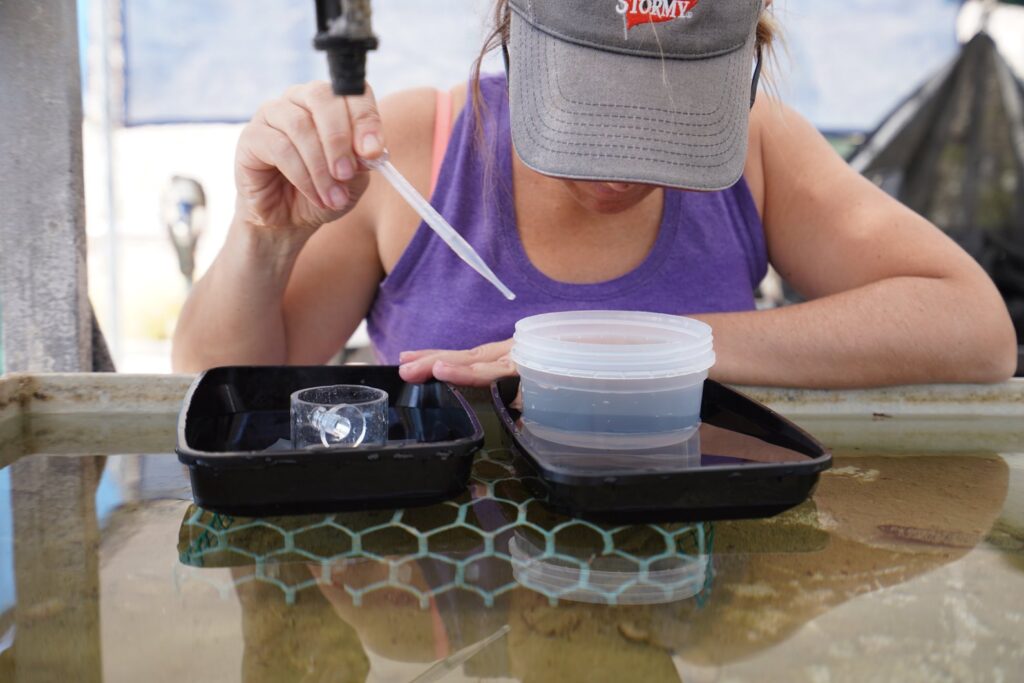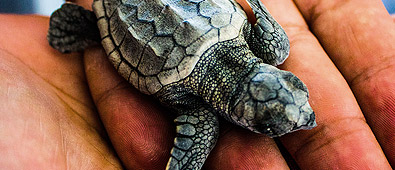Reef Ecology & Evolution Laboratory
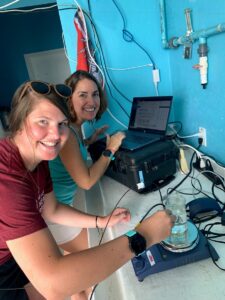 The newly formed Reef Ecology and Evolution Laboratory (REEL) at the Central Caribbean Marine Institute is focused on understanding how ecosystems function in order maintain biodiversity. Using a combination of large-scale in situ ecological surveys, small-scale laboratory experiments, and molecular ecology, we examine population structure, reproductive ecology, and genetic connectivity on tropical coral reef ecosystems, ranging from shallow inshore reefs to the mesophotic zone. Upcoming projects range from understanding molecular and physiological mechanisms of adaptation by corals to extreme environments, to enhancing reef complexity using out-planting techniques to restore key ecosystem functions. Both theoretical and applied, the research conducted by the REEL group will advance our understanding of how coral reefs and all of the organisms that reside there will not only survive, but thrive, under future environmental conditions.
The newly formed Reef Ecology and Evolution Laboratory (REEL) at the Central Caribbean Marine Institute is focused on understanding how ecosystems function in order maintain biodiversity. Using a combination of large-scale in situ ecological surveys, small-scale laboratory experiments, and molecular ecology, we examine population structure, reproductive ecology, and genetic connectivity on tropical coral reef ecosystems, ranging from shallow inshore reefs to the mesophotic zone. Upcoming projects range from understanding molecular and physiological mechanisms of adaptation by corals to extreme environments, to enhancing reef complexity using out-planting techniques to restore key ecosystem functions. Both theoretical and applied, the research conducted by the REEL group will advance our understanding of how coral reefs and all of the organisms that reside there will not only survive, but thrive, under future environmental conditions.
Assessing the mechanisms of molecular and morphological adaptation by corals to extreme environments, funded by the National Science Foundation.
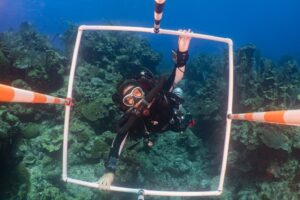 This collaborative study between CCMI and the University of Haifa, Israel, addresses two primary research questions: (1) how does coral morphology and physiology differ across depth and (2) are these differences due to plasticity or evolutionary adaptation? Using a multifaceted approach, including advanced molecular and imaging techniques, we will examine the mechanisms that enable corals to thrive across broad depth gradients in the Caribbean and the Red Sea.
This collaborative study between CCMI and the University of Haifa, Israel, addresses two primary research questions: (1) how does coral morphology and physiology differ across depth and (2) are these differences due to plasticity or evolutionary adaptation? Using a multifaceted approach, including advanced molecular and imaging techniques, we will examine the mechanisms that enable corals to thrive across broad depth gradients in the Caribbean and the Red Sea.
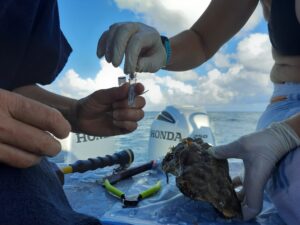
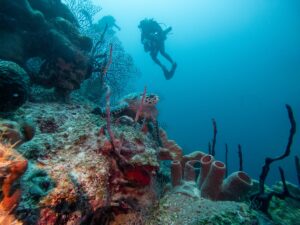 In 2022, CCMI received a £490k grant from the UKs Darwin Plus Initiative, which has been subsequently matched by a private donor, to support an innovative, collaborative sea mount exploration project. The team will be conducting extensive surveys and using cutting-edge technology to better understand the marine ecosystems at 12-mile Bank and Pickle Bank. Offshore seamounts like these banks are closely related to islands and often provide important mid-way locations for species to connect populations in more distant areas.
In 2022, CCMI received a £490k grant from the UKs Darwin Plus Initiative, which has been subsequently matched by a private donor, to support an innovative, collaborative sea mount exploration project. The team will be conducting extensive surveys and using cutting-edge technology to better understand the marine ecosystems at 12-mile Bank and Pickle Bank. Offshore seamounts like these banks are closely related to islands and often provide important mid-way locations for species to connect populations in more distant areas.
At present,12-Mile Bank and Pickle Bank are relied upon for commercial and recreational fishing and tourism. Yet there is a lack of baseline knowledge about species that are present at these sea mounts and in what numbers, as well as how the populations there relate to populations on Grand Cayman, the Sister Islands, and other locations in the Caribbean.
Collaborators from the Department of Environment, the Guy Harvey Ocean Foundation, and the Smithsonian Tropical Research Institute will all lend resources and expertise to this project, as well as CCMI staff.
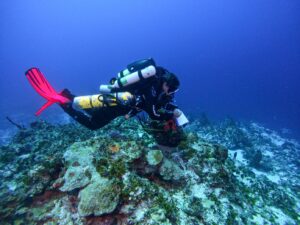
To gain a deeper understanding of the marine life at the seamounts, researchers will be using a high-tech suite of surveying and data-gathering methods. The teams will carry out deep technical dives on closed-circuit rebreather diving equipment to conduct surveys, create detailed photomosaics and bathymetric maps, and collect samples for eDNA analysis. Small water and sediment (sand) samples will be taken to conduct eDNA analysis which looks at DNA shed from skin, scales, feces and mucus in miniscule amounts. These small samples can be used, in conjunction with more traditional methods like surveys and video analysis, to gain insight into species that are present in an environment but may be more elusive.
This large-scale and technically complex project is made possible by multi-year funding recently awarded by the Darwin Initiative and matched by a private donor, managed by the Alexandria Bank Corporation (Cayman Islands). Results from this study will help guide future management of offshore seamounts and assist with marine spatial planning for offshore zones and the Blue Belt. This work is relevant to fisherman who use the banks as a resource, and to conservation groups that aim to support the persistence of coral reefs and pelagic and predatory species.
Watch the 3-part docuseries, Expedition Hope: Unexplored Seamounts of the Cayman Islands about the summer 2023 expedition to 12-Mile Bank:
Part 1: https://youtu.be/aIxIgvvVr4E
Part 2: https://youtu.be/NjAFh9-mhpU
Part 3: https://youtu.be/mssrMIpFWqc
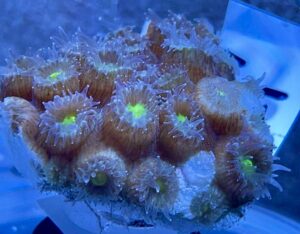
This is a collaborative three-year project led by the Bermuda Institute of Ocean Science, with CCMI as partners, alongside the University of Rhode Island. The project is combining research from three geographic regions (Cayman Islands, Bermuda, and Hawaii) to investigate how differences in environmental conditions experienced across a range of geographic locations impact the resistance and resilience of corals to thermal stress, including examining the molecular and cellular mechanisms that enable coral resilience. The project is also investigating the magnitudes and durations of thermal exposures that provide beneficial stress conditioning in corals and how stress conditioning impacts cellular and molecular states, including how long beneficial or thermally-tolerant phenotypes last under stress.
The project combines aquaria-based thermal performance stress tests, mesocosm environmental conditioning exposures, high-tech in situ measurement using reef chambers, and cutting-edge cellular, molecular, and organismal phenotyping. This cross-boundary project that draws results from Caribbean, Pacific, and Atlantic reefs is shedding light on the benefits of natural environmental and human intervention impact on coral resilience, which is a pressing knowledge gap in our capacity for forecasting coral reef futures, supporting science-based decisions for cross-regional conservation and restoration in the future.
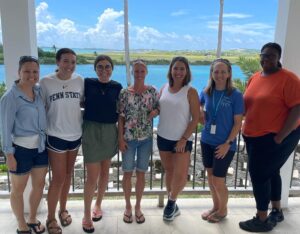
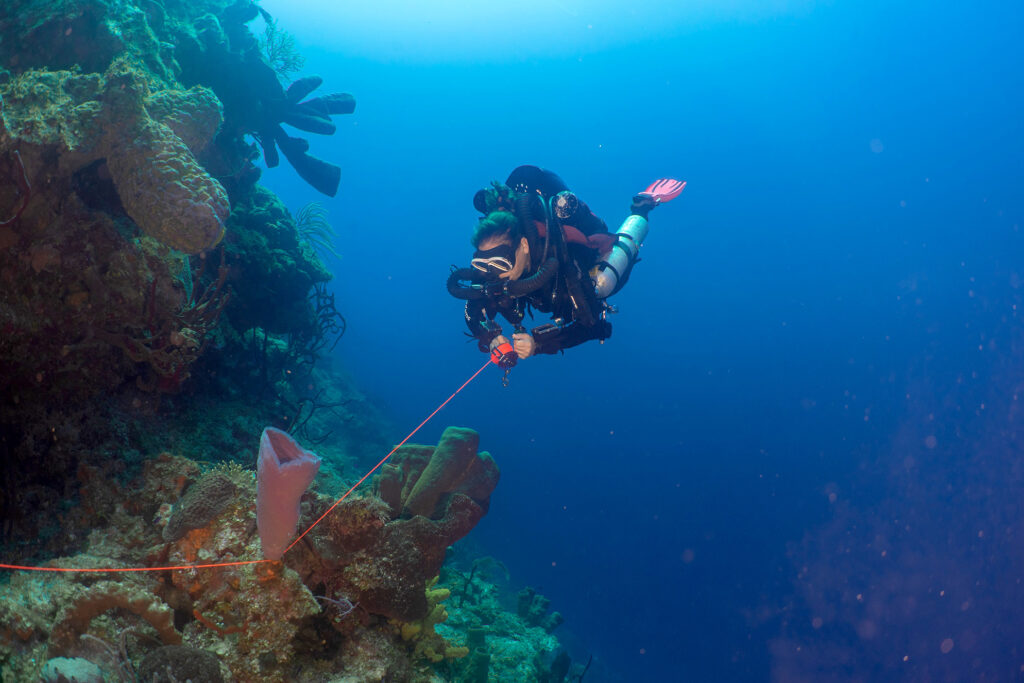
Mission of REEL
Promote resilience of coral reefs ecosystems through increased understanding of adaptation and acclimatization potential of ecosystem engineers, protection of key ecosystem functions, and identification of areas of refuge.
